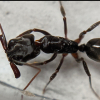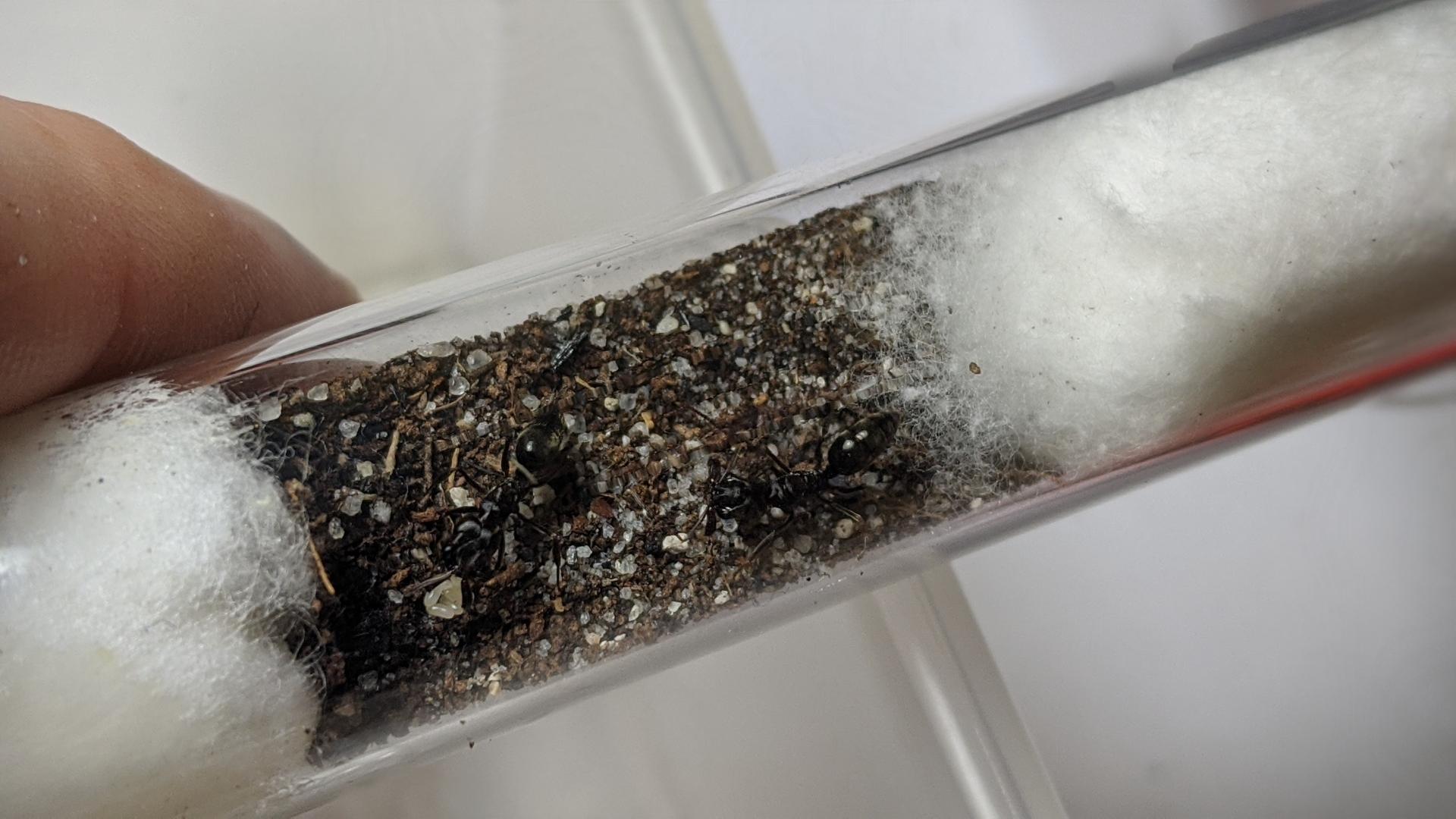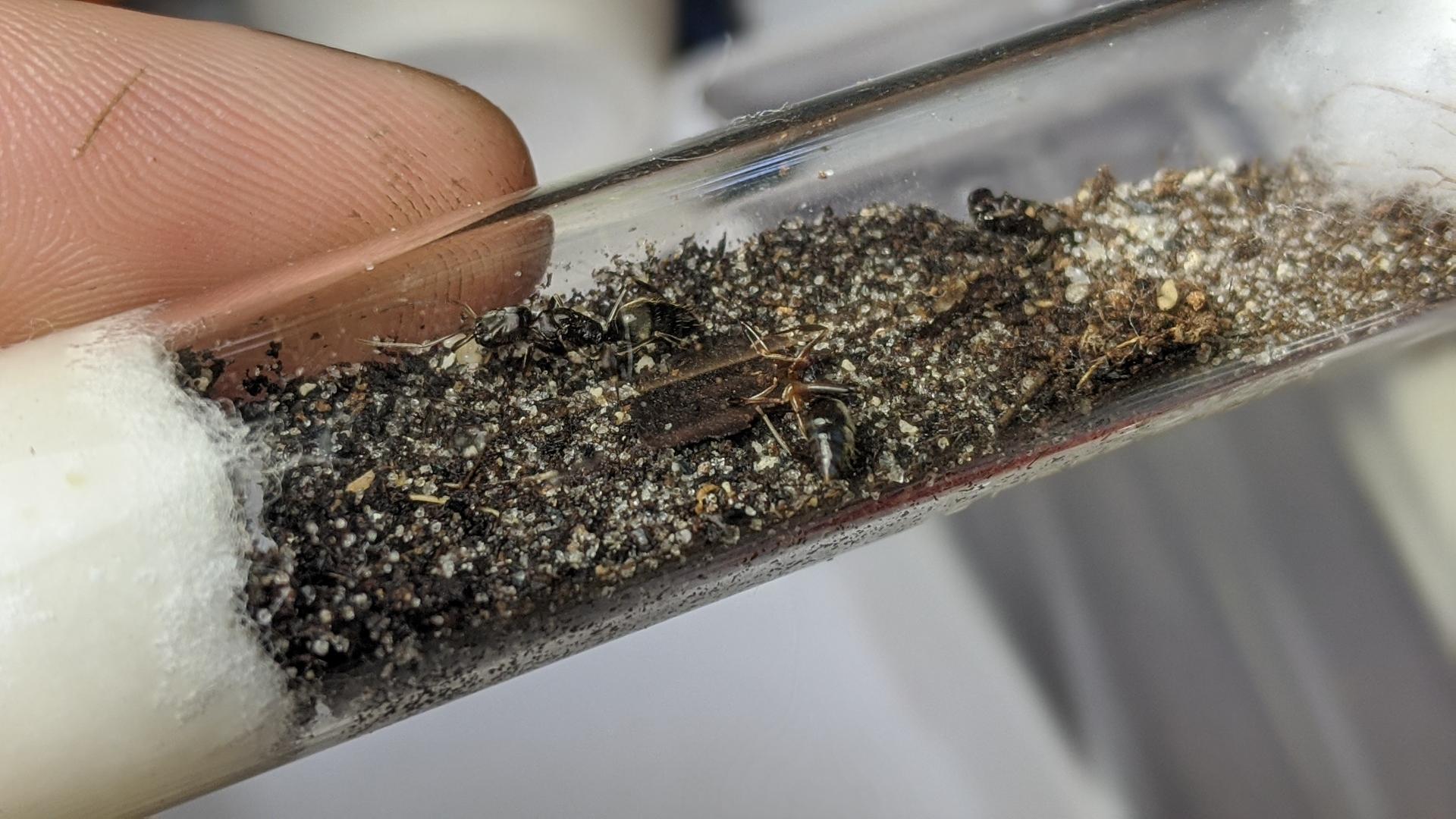Odontomachus brunnneus is known to have rather complex intracolony relations, in which they will engage in antennal dueling to establish dominance and a heirarchy within the colony. I have observed ritual dominance behavior in my mature Odontomachus brunneus colony in which several members will physically restrain another worker for several minutes while shivering their antennae.
I have also excavated brunneus colonies with multiple dealate queens in the nest though to my knowledge they will not engage in pleometrosis. With the knowledge that they had relatively complex intracolony relations as well as finding multiple queens in a nest I decided to attempt to introduce a second queen to my colony and see if they engage in secondary polygyny.
I have had this colony for two years and raised it from a lone queen collected in Perry, FL in June of 2018. The queen I introduced was collected in Gainesville, FL (over one hundred miles away) and was almost certainly not closely related at all. Upon introduction the queen immediately began engaging in submission/begging behavior with the workers she encountered and occasionally engaged in antennal sparring, after 30 or so minutes she was taken inside the nest, I cannot confirm if she was accepted but I witnessed absolutely no aggression at all. Below is a short video showcasing the described behavior:
Edited by SuperFrank, July 25 2020 - 3:34 PM.




















